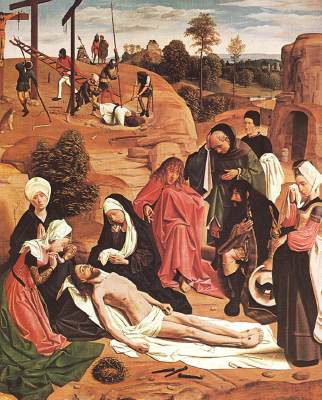| |
||||||||||||||
 |
 |
|
 |
|
 |
|
 |
|
 |
 |
||||
| |
|
 |
 |
 |
||||||||||
 |
|
|
|
|
||||||||||
|
|
|
|||||||||||||
|
|
|
|||||||||||||
| |
|
|
|
|
|
|
|
|
|
|
|
|
|
|
| Historical Anachronism |
Medieval
and Renaissance painting is filled with anachronism. This juxtaposition
of biblical scenes taking place in contemporary setting was an expected
and understood convention at the time these paintings were created,
one that in the modern era has fallen from the visual vernacular, and
seems strange or surreal to us. The intention of having, for example,
Mary and the attendants wearing contemporary clothing was to make the
teachings of the church come alive for a largely illiterate population.
In many such paintings, an European Renaissance town is clearly recognizable
in the background, further grounding the scene in a setting contemporary
to the time it was created. Using the same principles updated
to the realm of today, one might expect to see Mary dressed in jeans
or a casual skirt and blouse, or a designer dress, depending on whether
Mary is being portrayed as a commoner or royalty. This convention of
anachronism was the norm until sometime in the 18th
century when religious painting took on a nostalgic quality, with
the biblical era figures and settings rooted firmly in the past. |
 |
Sint Jans tot Geertgen Lamentation over the Dead Christ 1485-90 Kunsthistorisches Museum, Vienna |
| ________________________________________________________ |